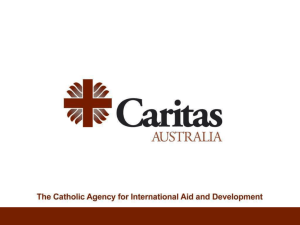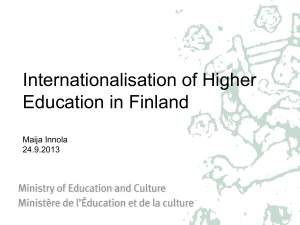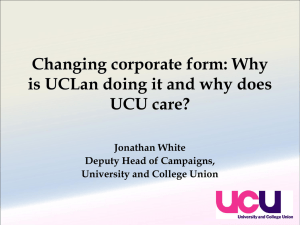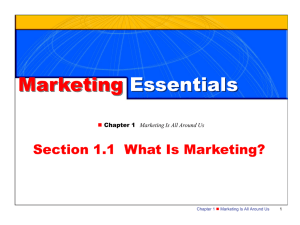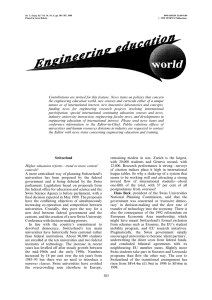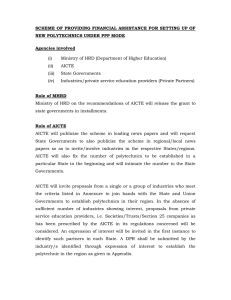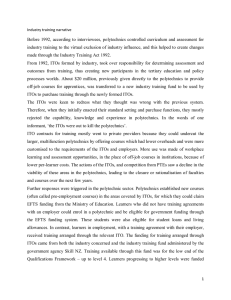Supporting Selected African Universities - The Experience of the Partnership for Higher
advertisement
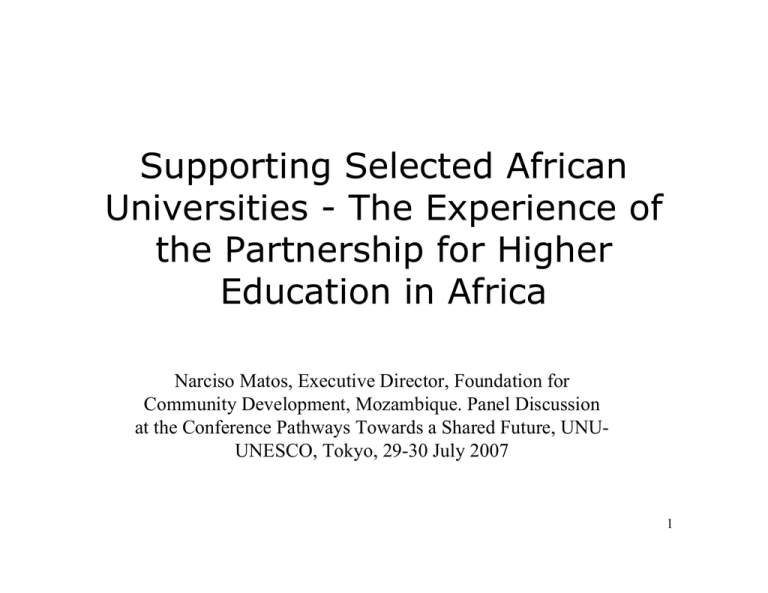
Supporting Selected African Universities - The Experience of the Partnership for Higher Education in Africa Narciso Matos, Executive Director, Foundation for Community Development, Mozambique. Panel Discussion at the Conference Pathways Towards a Shared Future, UNUUNESCO, Tokyo, 29-30 July 2007 1 UN Millennium Development Goals By 2015… • Goal 1: Eradicate poverty & hunger - halve proportion of people living on less than $1 a day • Goal 2: Achieve primary education children everywhere…will…complete primary schooling. • Goal 3: Promote gender equity – eliminate gender disparity in ...all levels of education 2 UN Millennium Development Goals By 2015… • Goal 4: Reduce child mortality - reduce by 2/3 under-five mortality rate. • Goal 5: Improve maternal health - reduce by ¾ maternal mortality ratio. • Goal 6: Combat disease – halt and begin to reverse spread of HIV/AIDS. 3 UN Millennium Development Goals By 2015… • Goal 7: Ensure environmental sustainability – integrate…sustainable development into country policies … halve proportion of people without …access to safe drinking water and basic sanitation. • Goal 8: Develop global partnership – …. make debt sustainable in the long term. • http://devdata.worldbank.org/atlas-mdg/ 4 Higher Ed in Mozambique • Population: 21 million • HE Institutions: 12 » Universities: 3 Public + 2 Private » Polytechnics: 3 Public + 4 Private • HE Students: 30,000 • Primary Education (1-7): 4 million students • Enrolment rate: 29% 5 Moz’s Efforts To Meet the MDGs • Expansion of school system – Need school teachers, review educational content and improve quality • Expansion of health system – Need doctors, nurses, lab technicians, other HR • Decentralization of public administration to rural areas – Need civil servants, governors, district administrators, police officers, etc. • Building roads, schools, hospitals – Need architects, engineers, environmental experts 6 Moz’s Efforts To Meet the MDGs • Building 2 new universities and 3 Polytechnics • The Polytechnics: 120 fresh students per year each • Their annual budget (2007): $1,280,000 • Recurrent costs: • Salaries and benefits: • Capital investments $280,000 $440,000 $560,000 • Goodwill & Commitment – Few Resources: – Lack of skilled people, opportunity for peer learning and networking – Lack of facilities, equipment, books, journals – Lack of money 7 Challenges Facing Africa’s Higher Ed • Cope high demand for HE, rapid expansion – Demand for HE has weak correlation with economic growth – Brazil: 1 additional year of schooling in average leads to 11% increase in salary • Balance expansion with quality and relevance – Too little if any research carried out – Predominant rote-learning and memorization – Little context-relevant and indigenous content • Balance demand for university to be instrument of development – preserve core characteristics of university – Research and knowledge production – Academic freedom: unconstrained creation and probing 8 of ideas Globalization Opportunities and Threats – Market forces are opportunity and threat • Fee-paying and evening students – generate income without neglecting quality, research and outreach • Introduce responsive programs: informatics, law, business, etc. – without neglecting natural sciences, humanities,social sciences – ICT revolution is opportunity and threat • Give access to information and networks • Due to cost it widens the digital divide – Mobility of workforce is opportunity and threat • Brain drain and lost of skilled professionals • Collaboration with experts from better endowed places 9 Alternative Strategies for HE Training • Network Model: networks of scholars, research groups, innovative centers (AERC, USHEPIA, RISE, etc) • The “Indian Model”: Create advanced S&T centers (e.g. Nelson Mandela Institutes of Technology) • National versus Regional: Decide training that can and must be offered within national borders • Training “overseas”: costs, relevance, brain drain 10 Support to HE in Africa Data Base 2000-05 ($Millions) Organisation Funding Projects World Bank 259.2 28 Netherlands PPET 140 14 PHEA 135 638 Swedish IDA 124.9 7 European Union 110.8 7 Japanese International Cooperation Agency 85 7 Canadian IDA 72 32 Norwegian OFA 70 42 US Aid 17.2 84 (1.3Billion) UK DfID 10 5 Germany (DAAD) 10 12 11 Patterns of Support to HE 1. Lack of Support for Developing HE – Particularly Institution Building/ Research 2. Projectization – Lack of Focus/Coherence/Continuity/Learning 3. Strong Convictions, Weak Evidence – HE is not object of study to inform development 12 Partnership For Higher Education in Africa Foundations & Countries • Goal: Strengthen higher institutions and their contribution to national development • Member Foundations: Ford, MacArthur, Rockefeller, Mellon, Hewlett, Kresge, Carnegie 13 Activities of Individual Foundations • • • • • • • • ICT equipment & applications & training Fellowships for Masters and PhD training Library automation, books, journals, training Fund-raising, alumni relations, research administration Curriculum (re)design Research, community service, incubation of SMEs Staff mobility, participation in conferences and networks Women in HE: in governance of HEI, gender in curriculum and university regulations 15 Joint Partnership Initiatives • Forum of Leaders of African Universities • Higher Education Research and Studies • Regional collaboration for research and training • Access to electronic information: bandwidth and elearning 16 Partnership Grant-Making $Millions Type of Grants 2000 –2005 (5 year goal $150 million) % 2006 – 2007 (5 year goal $200 million) % Joint Partnership 2 12 9 15 88 53 85 Individual 152 Foundations Total 173 62 17
